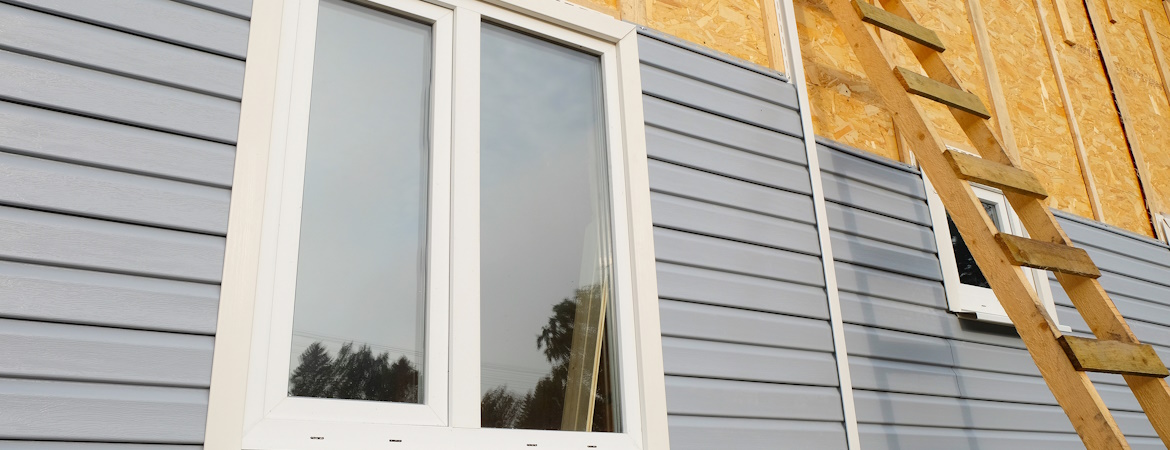Get Answers to Your Biggest Questions About Vinyl Siding Installation, Repair, and More
Vinyl is a durable and versatile siding material that has grown in popularity because of its easy maintenance and variety of colors and styles. But exactly is vinyl siding made of, and why is it so in-demand?
Let’s dive into the basics of vinyl siding and why homeowners choose it, how much it costs, and whether it can be easily repaired.
What Is Vinyl Siding?
Vinyl siding is an exterior protective covering for homes. It’s made of polyvinyl chloride (PVC) resin, and it’s been around since the late 1950s, when it was introduced as a durable alternative to traditional siding materials like wood.
Why Do Homeowners Choose Vinyl Siding?
Vinyl siding is immensely popular for a lot of reasons. Unlike its predecessors, vinyl siding is engineered to withstand the elements – be it blistering sun, biting cold, or moisture – without succumbing to the common pitfalls of rotting or paint peeling. Homeowners like that they can get vinyl siding installed and then perform very little maintenance to keep it looking great – no more scraping, painting, or rot repair.
Available in a variety of textures, finishes, and colors, vinyl siding empowers homeowners to achieve the precise look they envision for their home’s exterior. Whether the goal is to replicate the classic charm of wood grain or opt for a sleek, modern finish, this durable siding accommodates aesthetic desires without having to deal with the maintenance headaches associated with natural materials.
Low-maintenance vinyl is also long-lasting and doesn’t deteriorate like traditional wood siding, nor dent like old-school metal siding. Insects can’t destroy it, either. Generally the only required upkeep is an occasional power-washing to remove dirt build-up that occurs over time. This means vinyl siding saves both time and money!
How Much Does Vinyl Siding Cost?
Vinyl siding is cost-efficient, both in terms of purchase price and the potential for energy savings on heating and cooling bills, making it a worthwhile investment.
The insulating properties of vinyl improve a home’s thermal efficiency, so furnaces and air conditioners don’t have to work as hard to combat the summer heat or winter chill. The design of vinyl siding slats accommodates what is called “fullback insulation,” the foam that fills the hollow space between the exterior siding and the exterior wall of the house. Although it depends on the R-value – a number that measures insulating ability – of new vinyl siding, the U.S. Department of Energy estimates certain types of vinyl siding can save homeowners up to 20% off annual heating and cooling bills.
The actual cost of vinyl siding installation will vary by location, by vinyl siding type, by architectural features of a home, and more. While the initial investment can seem substantial, the long-term savings associated with reduced maintenance and energy cost reductions offset that expense over time. The best way to determine the cost of vinyl siding in your area is to request an estimate from a local exterior renovation company.
Can I Repair Vinyl Siding?
When confronted with the question of whether vinyl siding can be repaired, homeowners have a few options to consider. For minor damages such as small cracks, holes, or slight warping, the repair process is fairly simple and quick. This type of damage can occur as siding ages. Keep in mind that no siding material is completely indestructible! If vinyl siding is more severely damaged, such as after a storm, it may need to be partially replaced.
The bottom line is that having vinyl siding repaired is not necessarily a stressful experience, and professional home renovators can quickly and easily take care of any issues. Always talk to a siding professional so you can understand your home’s needs and prevent unwanted moisture penetration or other types of damage to your home.
Doesn’t Vinyl Siding Look Plain?
When homeowners first think of vinyl siding, they likely imagine traditional horizontal lap. For someone with a heightened sense of style or a home with unique architectural features, standard lap siding may not seem very exciting.
But keep in mind that modern vinyl siding is now available in an array of styles, like shakes, shingles, and scallops, so homes can receive customization that highlights their features while still getting all the benefits of this material.
Homeowners can also create interest by choosing textured vinyl siding that mimics woodgrain, stone, or brick, even the more traditional options come in all kinds of colors, so vinyl siding can elevate curb appeal and reflect personal style.
Incorporating vinyl siding into your home’s design not only revitalizes its appearance but also contributes to a cohesive aesthetic that resonates with your vision for a beautiful, enduring home exterior. Is today’s vinyl plain? Absolutely not!
Is Vinyl Siding Right For My Home?
Ultimately, vinyl siding installation is a homeowner’s individual choice, barring any special city code or HOA rules that prevent it. Otherwise, if vinyl siding aligns with your priorities about maintenance, cost, and aesthetic appeal, then it could be the best choice for your home’s exterior renovation.

